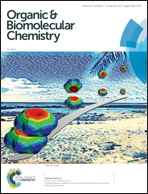Synergy between experimental and computational studies of aromatic stacking interactions
Abstract
Aromatic stacking interactions are one of the most common types of non-covalent interactions. However, their fundamental origins and the ability to accurately predict their stability trends are still an active area of research. The study of aromatic stacking interactions has been particularly challenging. The interaction involves a delicate balance of multiple forces, and the aromatic surfaces can readily adopt different interaction geometries. Thus, the collaborative efforts of theoretical and experimental researchers have been essential to understand and build more accurate predictive models of aromatic stacking interactions.



 Please wait while we load your content...
Please wait while we load your content...